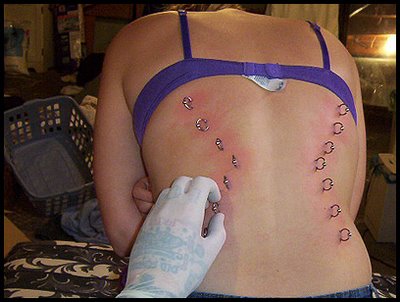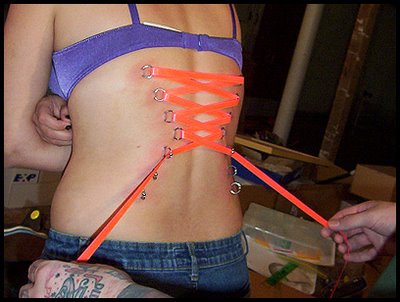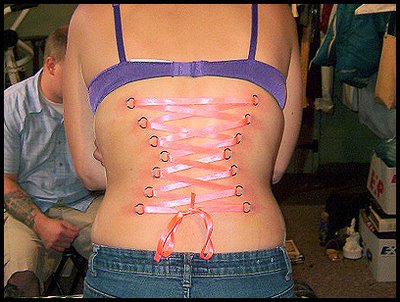 Sex Therapy involves the therapeutic treatment of sexual disorders such asimpotence, premature ejaculation, retarded ejaculation, hypoactive sexual desire, painful coitus, and orgasmic disorders. These problems, while not subjects of polite conversation until relatively recently, have been found to be extremely common, and further, to be sources of considerable emotional distress and interpersonal conflict in relationships. Masters and Johnson, pioneers in the sex therapy field, have stated that at one time or another half of all marriages have significant sexual problems. Other studies have suggested that at some point in their lives 10 percent of women are an orgasmic, 7 percent of men are impotent, and 18 percent of men suffer from premature or retarded ejaculation. Inhibited sexual desire, a condition characterized by loss of interest in sex, is thought to trouble one in five adult women during their lives. Additionally, surveys of married couples find that over half complain of encountering interference's that block their full enjoyment of sex.
Sex Therapy involves the therapeutic treatment of sexual disorders such asimpotence, premature ejaculation, retarded ejaculation, hypoactive sexual desire, painful coitus, and orgasmic disorders. These problems, while not subjects of polite conversation until relatively recently, have been found to be extremely common, and further, to be sources of considerable emotional distress and interpersonal conflict in relationships. Masters and Johnson, pioneers in the sex therapy field, have stated that at one time or another half of all marriages have significant sexual problems. Other studies have suggested that at some point in their lives 10 percent of women are an orgasmic, 7 percent of men are impotent, and 18 percent of men suffer from premature or retarded ejaculation. Inhibited sexual desire, a condition characterized by loss of interest in sex, is thought to trouble one in five adult women during their lives. Additionally, surveys of married couples find that over half complain of encountering interference's that block their full enjoyment of sex.
While universally emphasizing correcting sexual misinformation, the importance of improved partner communication and honesty, anxiety reduction (including fear of performance failure), sensual experience and pleasure, and interpersonal tolerance and acceptance, sex therapy includes three different levels of intervention to address the various sexual problems mentioned above, depending on the nature and causes of the problem involved.
Sex therapists believe that many sexual disorders are rooted in learned patterns and values. These are termed psychogenic disorders. As they are growing up, children observe interaction between their parents and others and are the objects of various messages about their sexuality. Conflict or other problems, including sexual problems in marriages, can be transmitted
to children and result in the formation of unhealthy attitudes about sex, about sex organs, or about the body in general. Moreover, parents, religious institutions and societal norms may convey very repressive attitudes about sexuality that contribute to the formation of diverse sexual dysfunction's.
Problems of this nature are believed by sex therapists to constitute the majority of sexual disorders. An underlying assumption of sex therapy is that relatively short-term outpatient therapy can alleviate learned patterns restrict symptoms, and allow a greater satisfaction with sexual experiences In cases where significant sexual dysfunction is linked to a broader emotional problem such as depression or substance abuse, intensive psychotherapy and/or pharmaceutical intervention may be appropriate.
Substance-induced sexual dysfunction, for example, can involve loss of interest in sex, inability for the male to become erect, impaired orgasm, and pain during intercourse. Various medications also can produce symptoms of sexual dysfunction. Finally, there are a number of medical conditions that can cause sexual dysfunction, including various neurological problems
(e.G., multiple sclerosis), endocrine conditions (e.G., diabetes mellitus), vascular conditions, and several different infections. These are termed bio genic conditions.
In his book Human Sexual Response, Leif described five sexual response phases: desire, arousal, vasocongestion, orgasm, and satisfaction. Sexual dysfunction can occur in any of these areas. If the dysfunction is a chronic problem, such as a woman who has always experienced pain during intercourse, it is called primary dysfunction. If the dysfunction is situational, such as
a man who previously had no difficulty achieving erection but begins to experience this problem at the beginning of a new relationship, it is called secondary dysfunction. Primary or secondary dysfunction can occur in any of the five domains of sexual response. Dysfunctions associated with sexual desire include hypoactive sexual desire disorder and sexual aversion disorder. In the first of these, the individual has a persistent absence of sexual fantasies or desire for participation in sexual activity. In the second disorder, there is a complete or near complete aversion to contact with a partner's genitals. These conditions often reflect serious emotional
problems, although individuals may be responsive to intensive psychotherapy combined with sexual therapy.
Sexual arousal disorders are found in both males and females. Males may be interested in sex but suffer from impotence or erectile dysfunction, while females are unable to maintain the lubrication-vaginal swelling response of normal sexual excitement. In their book, Human Sexual Inadequacy, Masters and Johnson asserted that 90% of impotency cases were psychogenic in origin. Even in older men, they maintained, emotional issues rather than medical problems are the main causes of impotence. Masters and Johnson reported great success in treating impotence with short-term therapy, especially when it had its roots in fear of failure and performance anxiety. Since their work in the late 1960's, continued medical research and improved diagnostic techniques indicate that only 40% to 50% of male impotence is caused solely by psychogenic factors.
In males, orgasmic dysfunction includes both premature and retarded ejaculation (in which ejaculation may be completely absent despite stimulation and arousal). Retarded ejaculation may have psychogenic as well as organic causes, or may be a consequence of drug abuse or a side effect of a medication. Unlike retarded ejaculation, which is rare, premature ejaculation is fairly common. Therapy involves anxiety reduction and ejaculation control training. One approach to help with ejaculatory control is called the Valsalva Maneuver . Using this procedure, when a man senses he is about to ejaculate, he holds his breath and flexes his muscles as if he
is having a bowl movement. Performed correctly, this procedure enables the man to delay ejaculation and allows him to feel in more control of his body.
The Valsalva maneuver is best tried in the context of a therapy, which can also address the male or couple's anxieties about the experience. Inhibited female orgasm, a fairly common problem, is often caused by emotional or relationship problems. Sex therapy for this problem addresses underlying misinformation, psychological inhibitions, conflicting beliefs and values about women's right to sexual pleasure, and related issues. Partners counseling may be effective in addressing communication, control, and sensitivity issues, while couples sexual training can address sexual interaction issues. Couples may be provided with instruction on alternative
sexual arousal and satisfaction behaviors such as the Sensate Focus technique, given home assignments to practice the new strategies, and prompted to report outcomes to their therapist. Sometimes groups of couples with similar problems are brought together to provide support for open communication and behavioral change.
The organization of sex therapy varies. In some cases, a single therapist sees both partners. In heterosexual partnerships, a therapeutic team consisting of a male and a female therapist working together may be used. Alternately, some therapists emphasize self-treatment based on instruction, brief counseling, and the use of education aids like films and tapes. Sex therapy, like any other therapeutic process, should begin with a thorough history of the patient's problem(s). Due to the possibility of both biogenic and psychogenic factors in male impotence, a consultation with a urologist specializing in impotence is often recommended to identify and treat any biogenic factors before proceeding with psychotherapy.







































